Topiary plants provide a special way to manipulate the natural world into creative works of art, giving common greenery amazing shapes. All around the world, gardens and landscapes are adorned with elaborate designs created from these specialist plants that are meticulously cultivated and manicured.
Each species contributes its own unique appeal and personality to the art of topiary, ranging from the graceful curves of boxwood to the stately stature of juniper.
The following article will suggest 16 of the most beautiful topiary plants for your garden space.
Different Types of Topiary Plants
Holly

Ilex, the scientific name for holly, includes members of the Aquifoliaceae family that are deciduous as well as evergreen. Holly bushes, which are easily recognized by their tightly clustered, prickly leaves, make a perfect foundation for artistic topiaries.
But what really makes holly unique are the bright red, yellow, and orange berries that not only add color to gardens but also draw birds and other species, improving the surrounding environment.
Furthermore, holly’s relative resistance to pests and diseases adds to its allure for gardeners. Holly topiaries are an enticing and environmentally friendly option for improving garden areas because of its appealing aesthetic appeal and advantageous ecological qualities.
Rosemary
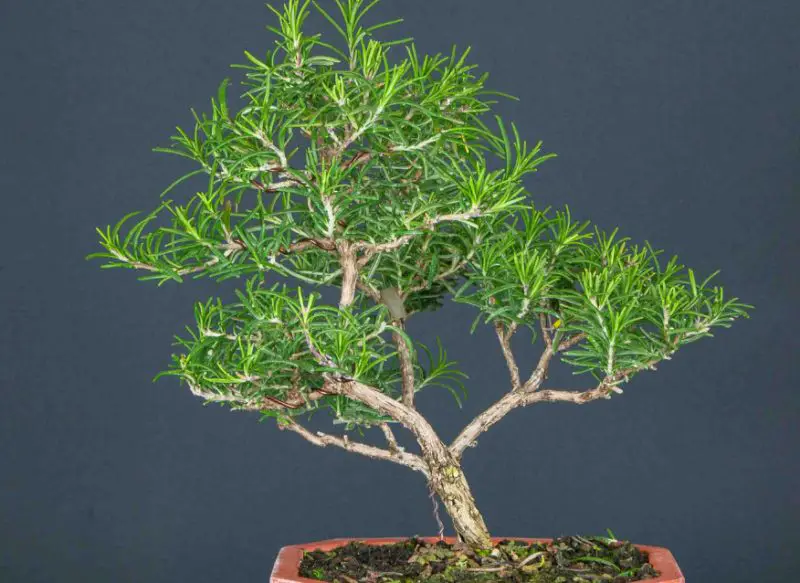
Scientifically named Salvia rosmarinus, rosemary is an adaptable evergreen shrub in the Lamiaceae family that is prized for its aromatic properties as well as its culinary uses.
In addition to being widely used in cooking, rosemary’s aromatic, needle-like foliage makes it a great material for topiary art, which adds both visual and smell appeal to gardens. Because of its naturally straight growth habit, it is ideal for creating vertical topiary forms like spirals, cones, or pyramids, which give any outdoor space a structured yet organic elegance.
The unique perfume of rosemary leaves releases when touched, creating a singular sensory experience that enhances the garden’s aesthetic appeal while also providing a pleasant Mediterranean scent.
Cypress
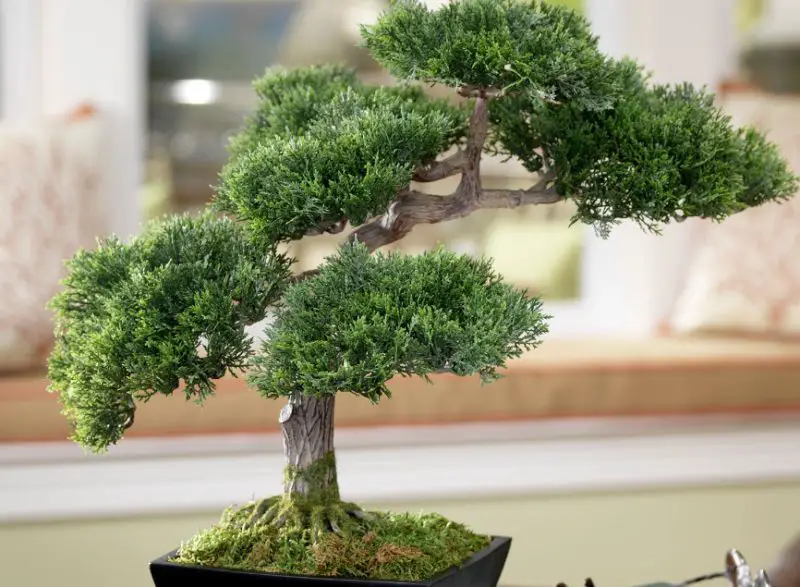
Cupressus, the scientific name for cypress, is prized for its graceful, columnar growth habit. Cypress makes a great choice for vertical topiaries because of its evergreen foliage and small, scale-like leaves. Gardens are given a distinct appeal by designs that range from spirals and tiers to obelisks or complicated patterns.
Its upright growth further adds to the visual attractiveness by making it a good choice for privacy screens or hedges.
Furthermore, a lot of cypress species are wind-resistant, which makes them perfect for topiaries in exposed or coastal places where other plants could not survive. This confirms cypress’s reputation as a hardy and adaptable plant for gardeners.
Euonymus
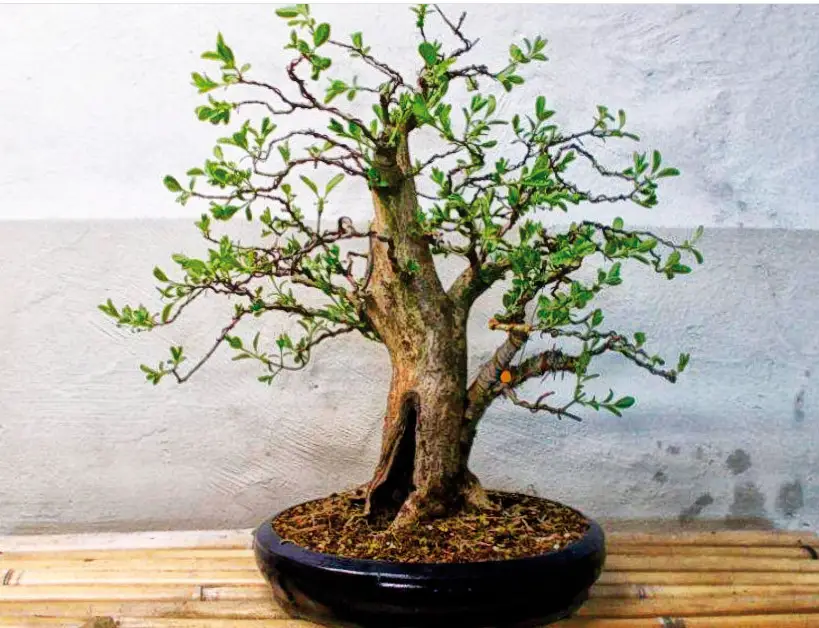
The plant Euonymus, which is referred to by its scientific name, comes in a variety of shapes and sizes, ranging from low-growing ground covers to tall, erect bushes. Because of its adaptability, topiary creations can be made in a variety of scales and shapes to suit various garden locations and design tastes.
Because of its natural tendency to stay compact, this plant is easy to maintain, which makes it a great option for novices who are interested in topiary art.
The vibrant leaves of Euonymus are a distinguishing characteristic. Several species give topiaries visual interest with their variegated, gold, or yellow leaf patterns. Choosing a variegated species will turn your planter into an eye-catching focal point in your garden.
Honeysuckle

The scientific name for honeysuckle is Lonicera, and it is well known for its fragrant blossoms that attract pollinators. However, this quick-growing plant also makes a great choice for topiaries. Its flexible stems make it simple to train and shape into the appropriate shapes.
Evergreen and deciduous types are both available; honeysuckle has year-round visual appeal and may be grown in a variety of conditions.
Whatever the species, bees, hummingbirds, butterflies, and other pollinators are drawn to the fragrant blossoms of honeysuckle. So, adding honeysuckle topiaries to the garden not only makes it more aesthetically pleasing but also helps the surrounding ecosystems by encouraging pollinator and biodiversity activities.
Bay Laurel
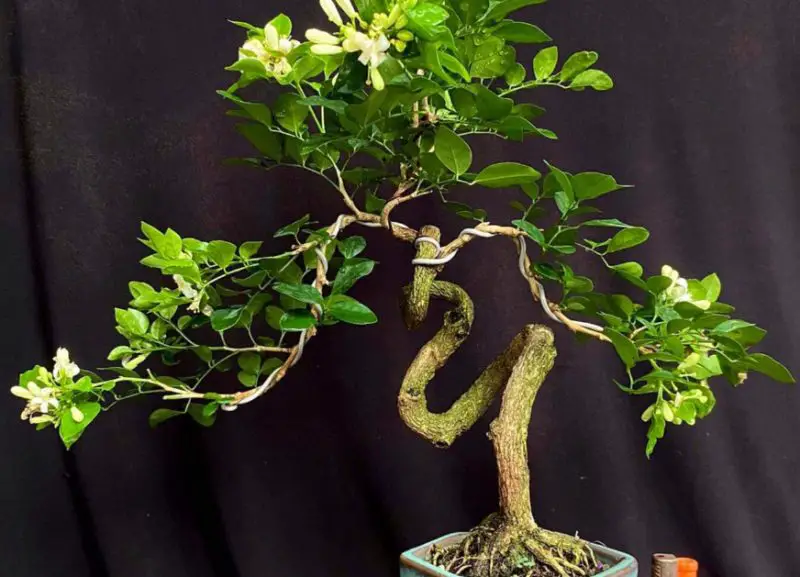
The scientific name for bay laurel is Laurus nobilis, and it belongs to the Lauraceae family of evergreen trees and shrubs.
Not only is bay laurel well-known for its fragrant leaves, which are frequently used in cooking, but gardeners also appreciate its unique foliage and bushy shape, which makes it a great choice for topiary sculpture.
One of bay laurel’s key benefits is that it grows slowly, making topiary designs easier to maintain. This is especially helpful for inexperienced gardeners.
The fragrance that its leaves give off adds even more to the overall ambience of the garden and heightens the topiary’s attraction.
But because bay laurel is prone to a number of illnesses and pests, it needs regular maintenance to stay healthy and vibrant.
Juniper
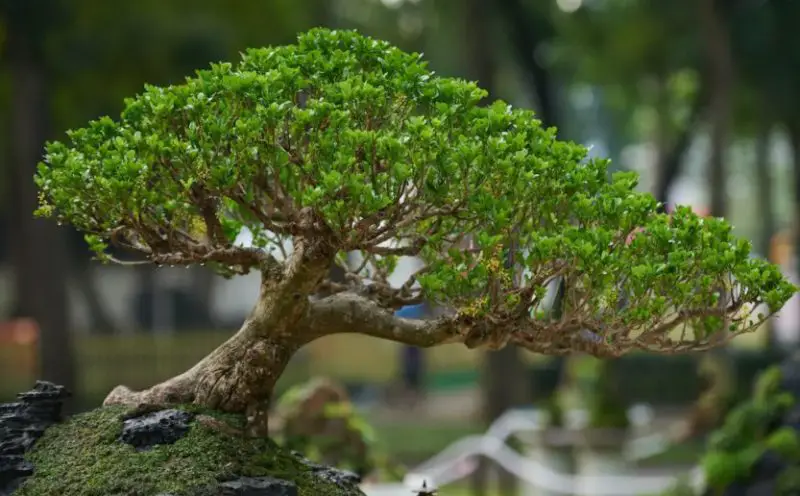
Within the Cupressaceae family, juniper, or Juniperus in scientific parlance, is a varied collection of evergreen coniferous plants and trees. Famous for its use in cooking, most notably in the making of gin, juniper is also a versatile plant for garden design.
Juniper shrubs are excellent hedges and work well for creating topiaries. Whether the leaves are scale-like or needle-like, their compact nature makes shaping easier and permits the creation of complex shapes.
Gardeners can combine junipers into topiaries of any scale or design, as there are many different kinds of juniper available. This allows for versatility to a variety of garden locations and aesthetic preferences.
Myrtle
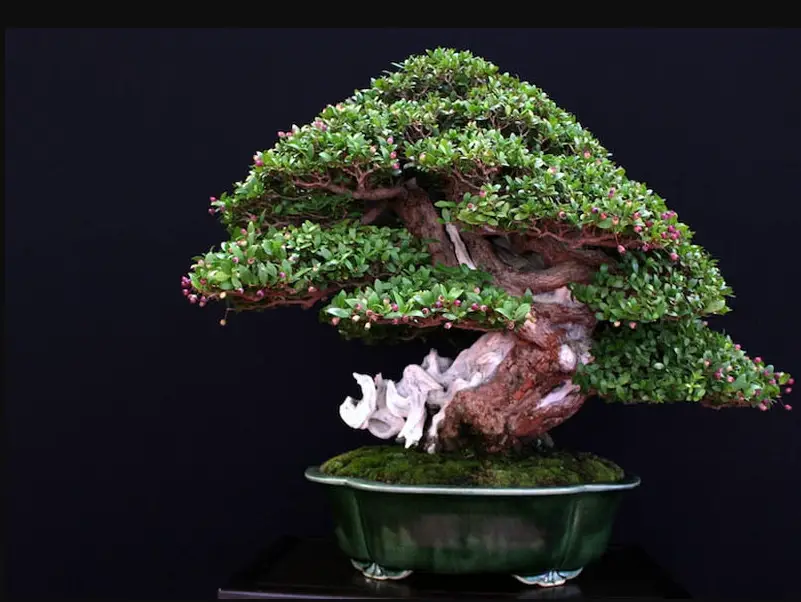
Scientifically known as Myrtus, myrtle has a deep cultural history and is a symbol of purity, love, and fertility. Because of its visual appeal and symbolic meaning, myrtle topiary makes a meaningful addition to any garden.
Myrtle is a beautiful year-round plant with glossy leaves that thrives in a variety of climates and makes for colorful gardens even in the dead of winter.
Myrtle enhances the topiary’s visual and sensory aspects with its exquisite white blossoms and delicious aroma, in addition to its foliage. These fragrant blooms enhance the aesthetic appeal of your garden while also drawing pollinators and enhancing the ecosystem in your haven.
Dwarf Alberta Spruce
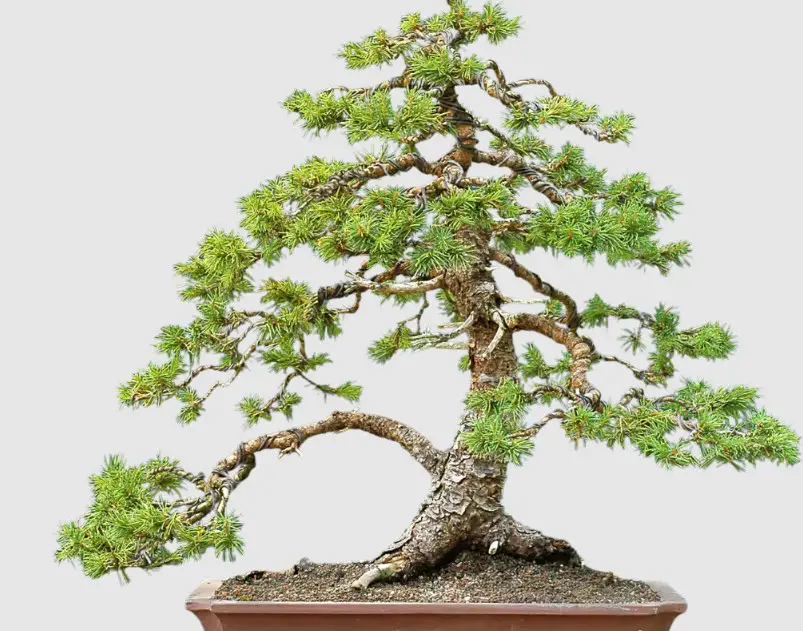
Picea glauca, the scientific name for the dwarf Alberta spruce, is a small, slow-growing evergreen conifer that belongs to the Pinaceae family. Well known for its organic pyramid design, it’s a great option for first-time topiary fans.
For beginners, its conical shape offers a straightforward template for geometric topiary arrangements. However, skilled gardeners can easily fashion it into complex sculptures or forms.
In addition to being simple to prune, the dwarf Alberta spruce is resilient, tolerating a wide range of pests, illnesses, soil types, and temperatures. Its strength and aesthetic appeal make it a valued addition to any garden area, providing both style and functionality.
Dwarf Japanese Black Pine
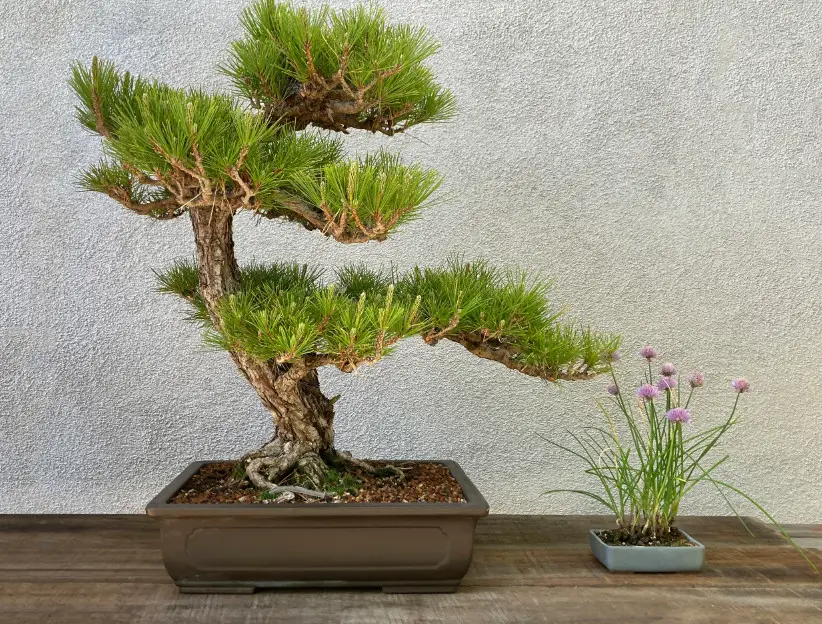
Pinus thunbergii, the scientific name for the dwarf Japanese black pine, is a small member of the Pinaceae family that is frequently seen adorning gardens, pots, and even collections of bonsai. Its moderate growth rate makes it a great choice for topiary crafts, especially for novices.
Its controllable size and growth habits make it an easy task to shape and train its branches. Furthermore, every topiary design is enhanced by its unique appearance, which is typified by irregular branching and a particular texture.
Its uniqueness makes it an alluring option for gardeners looking to make a bold statement in their outdoor areas.
Hornbeam
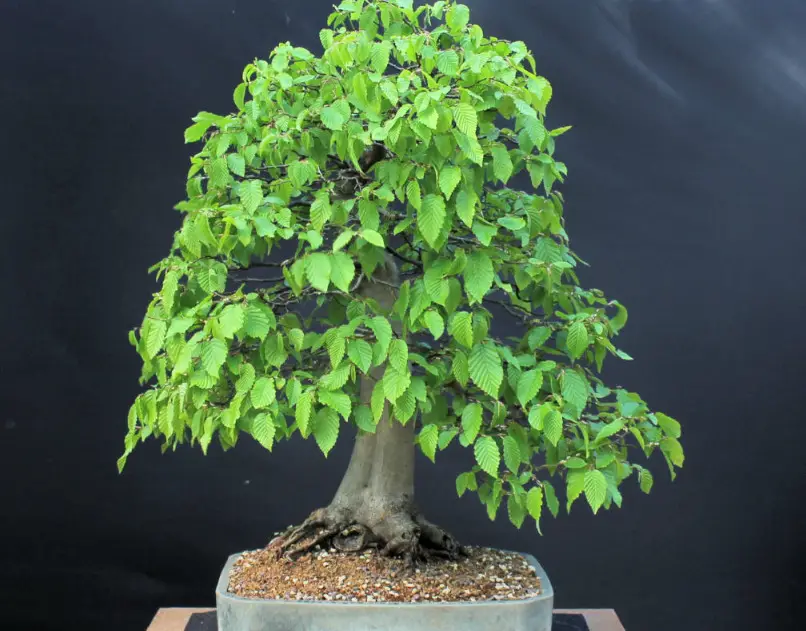
Because it’s deciduous, the hornbeam, or Carpinus as it’s scientifically known, is a great option for topiaries. It is a member of the Betulaceae family and has dense clusters of small, oval-shaped, serrated leaves with smooth gray bark. Its characteristics make it perfect for forming into geometric patterns and readily preserving clean lines.
Its leaf changes color in fascinating ways as the seasons change, and its versatility and sturdiness let it to thrive well in a variety of conditions. The hornbeam responds well to pruning and regenerates rapidly, making upkeep simple and shaping into well-defined forms possible.
The hornbeam is the best option for topiaries that are formal and geometric in design.
Boxwood
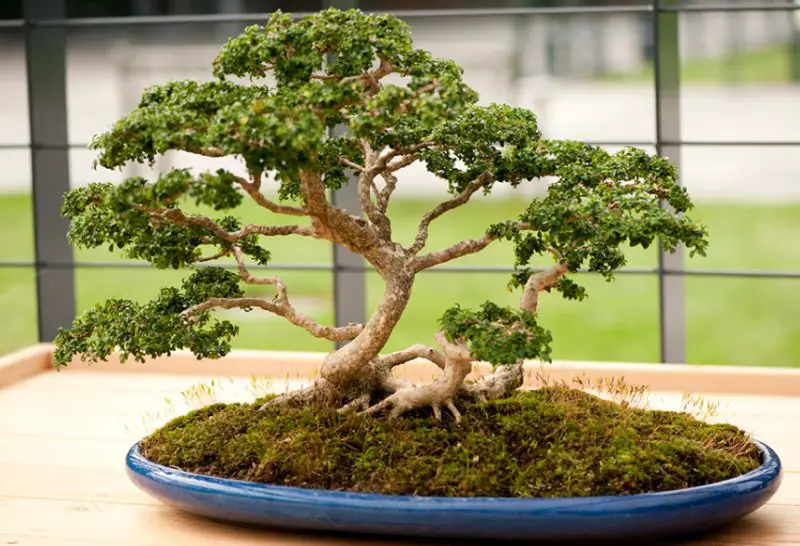
Scientifically referred to as Buxus, boxwood is a living example of nature’s creative landscaping ability. It is a mainstay of garden design all around the world due to its versatility and sturdiness.
Boxwood, with its glossy, densely linked leaves, provides a canvas for elaborate topiary designs. Its modest growth rate guarantees the longevity of these works of art, allowing them to retain their shape with little care.
Boxwood’s luxuriant foliage is vivid all year round, whether it is carved into geometric shapes or fanciful figures; this gives gardens an evergreen beauty even in the dead of winter.
Boxwood stands tall and gracefully preserves the attractiveness of outdoor settings while other plants lose their leaves.
Privet
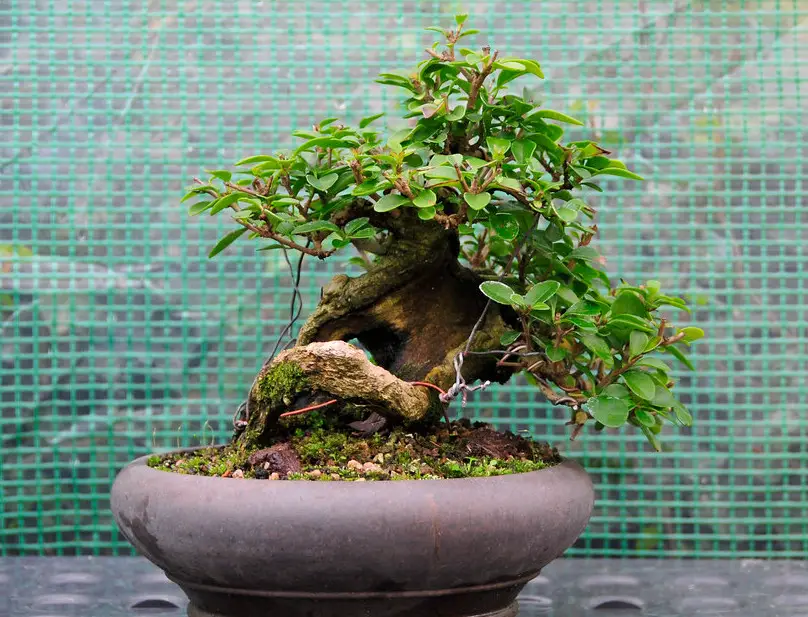
Ligustrum, the scientific name for privet, is a family of shrubs that includes a range of evergreen and deciduous types that belong to the Oleaceae family. Its tiny, oval-shaped leaves produce a dense, rich screen when grouped firmly, so it’s a great candidate for careful trimming and pruning.
Unlike boxwood, privet grows quickly, satisfying gardeners’ artistic whims with repeated redesigns and instant visual delight. Privet offers a variety of evergreen and deciduous varieties, allowing you freedom in selecting the ideal plant for topiary projects that is suited to certain soil and climate conditions.
Because of its adaptability, privet can be used in a variety of landscape designs and environments.
Yew
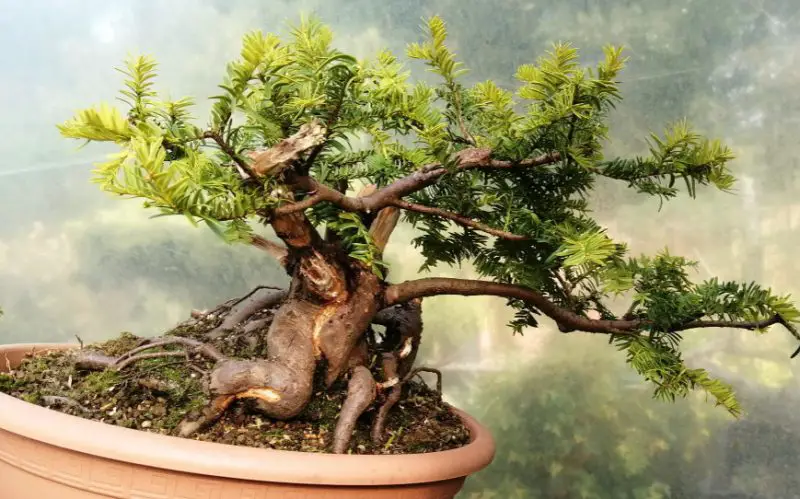
The Taxus baccata, or yew, is a hardy branch of the Taxaceae family, which includes evergreen coniferous trees and shrubs. Due to their dense, sculptable foliage composed of needle-like leaves, yew bushes are perennially beautiful additions to gardens.
They are visually appealing throughout the year due to their evergreen status, which is only the tip of their many benefits. Yews are remarkably resilient plants that, given the right conditions, can live for decades or even centuries.
Yew is more than simply a plant—it’s a legacy in any garden—because of its continuous vitality, which enables gardeners to create beautiful and detailed topiary art that may be cherished and passed down through generations.






